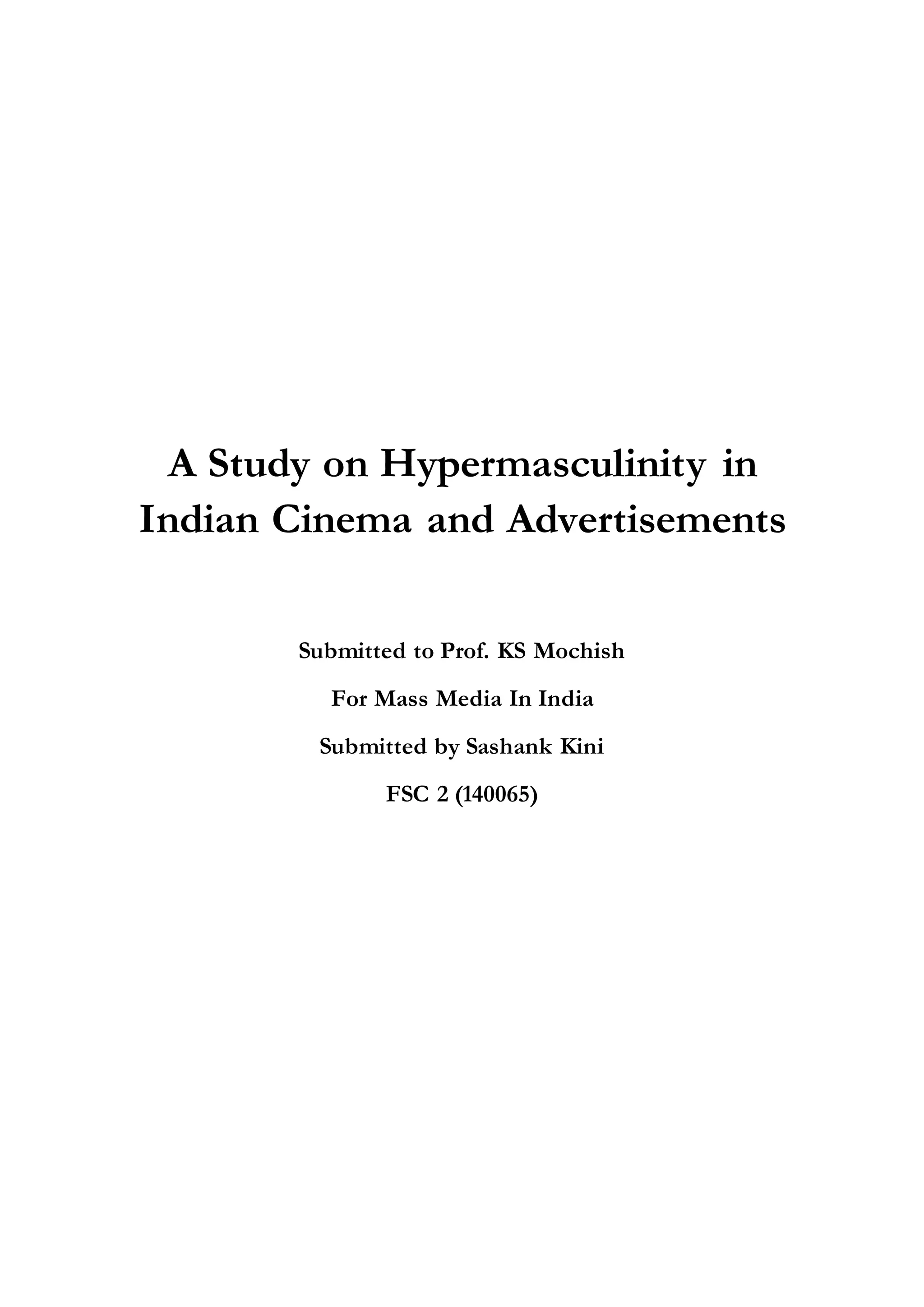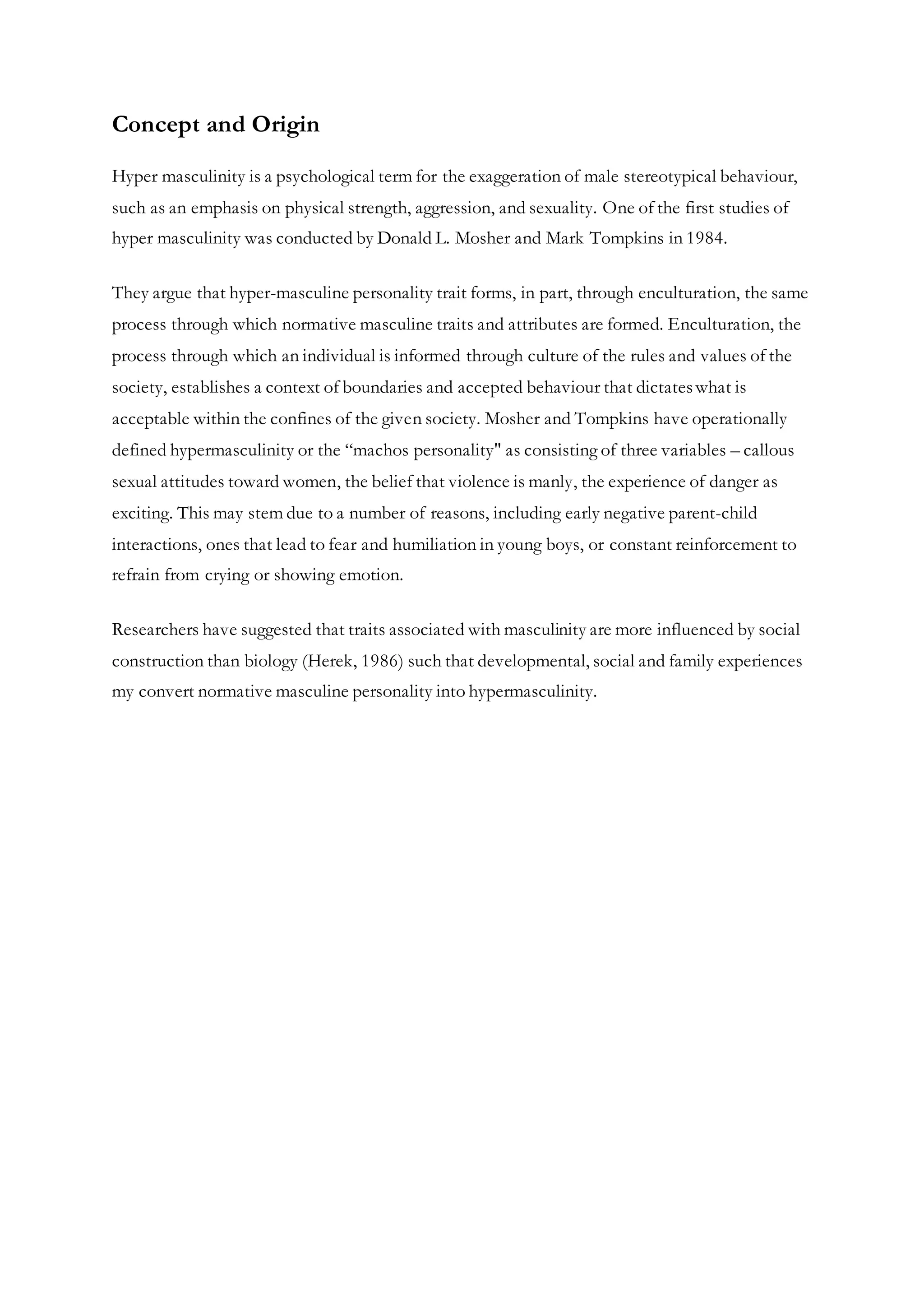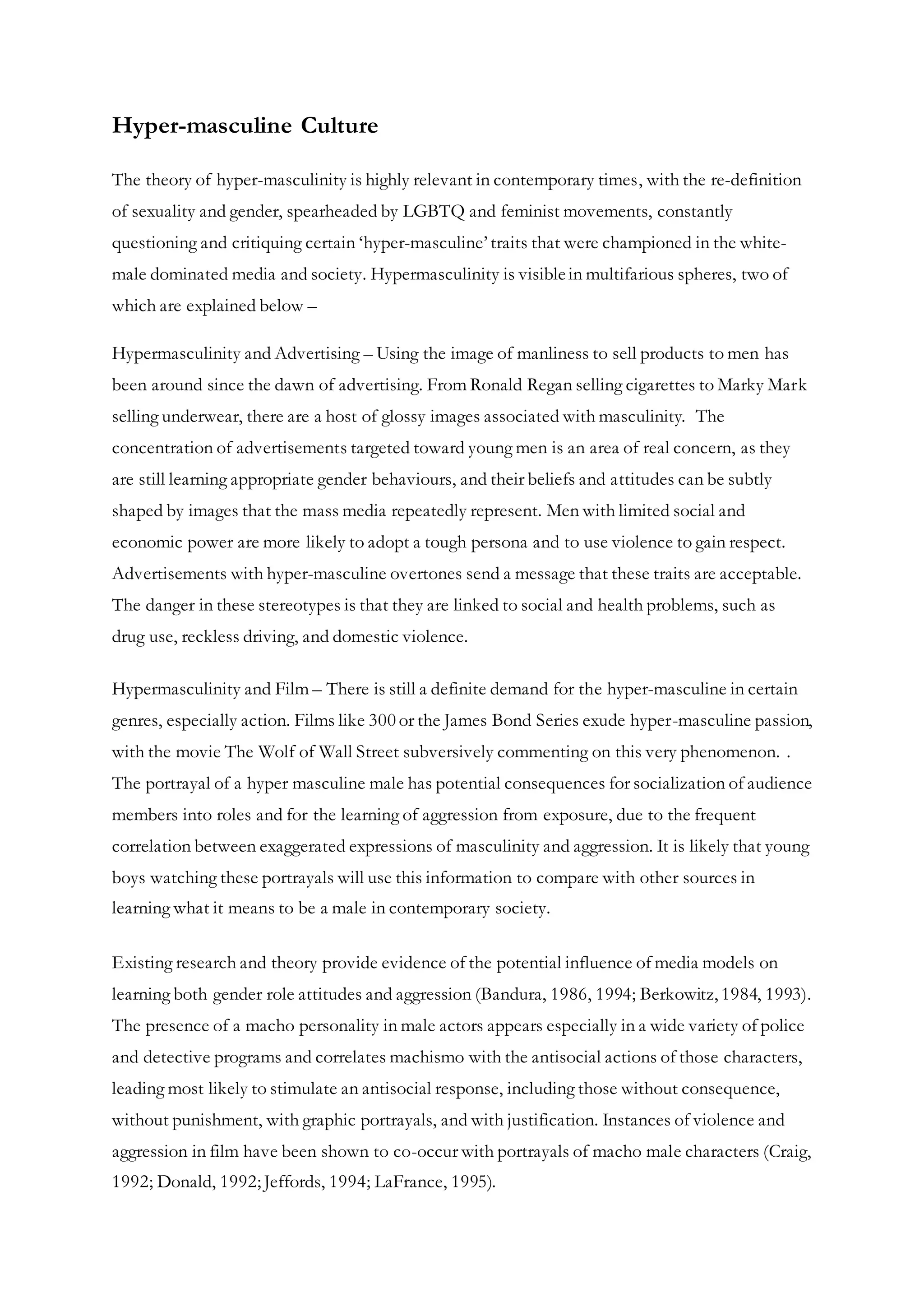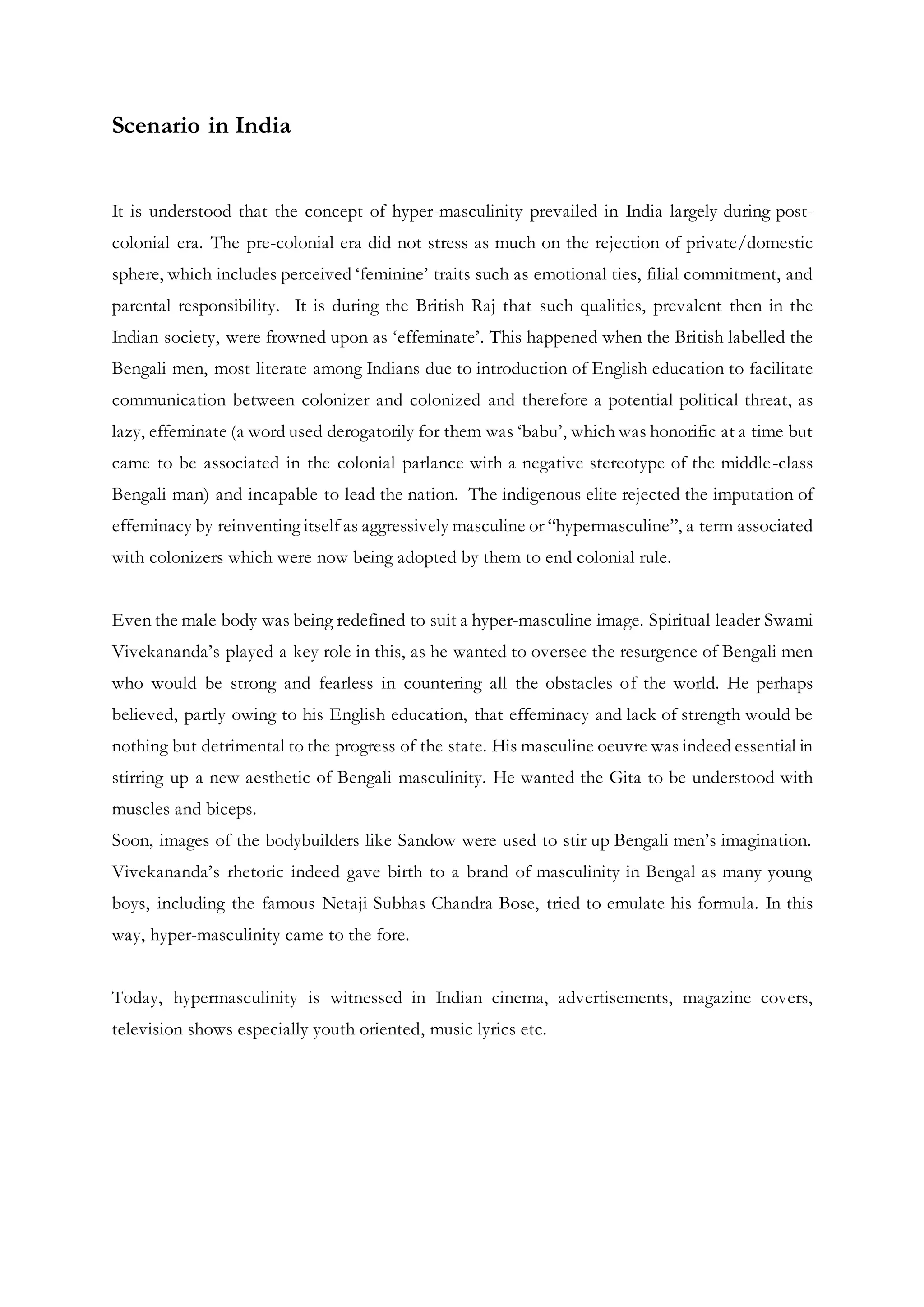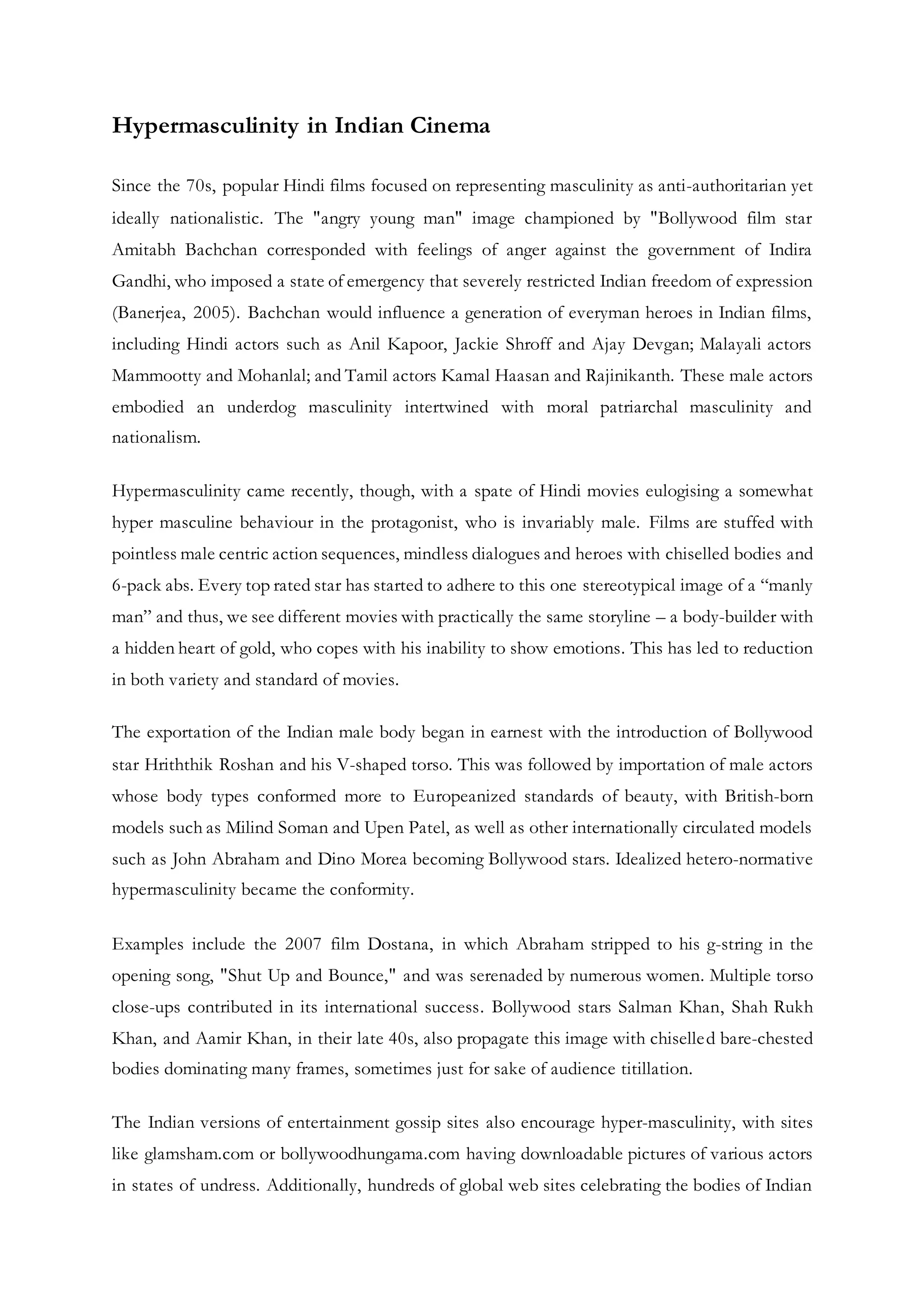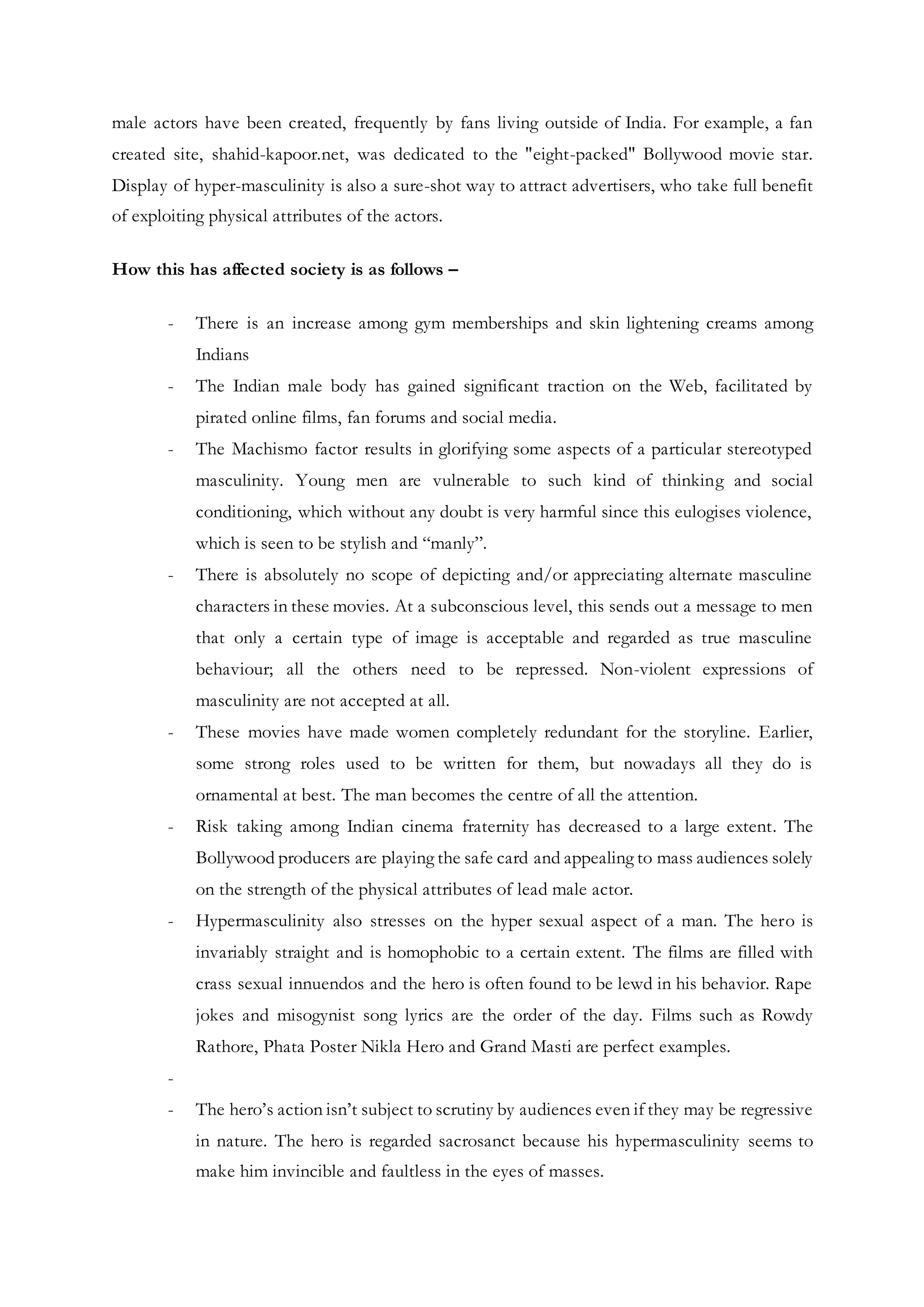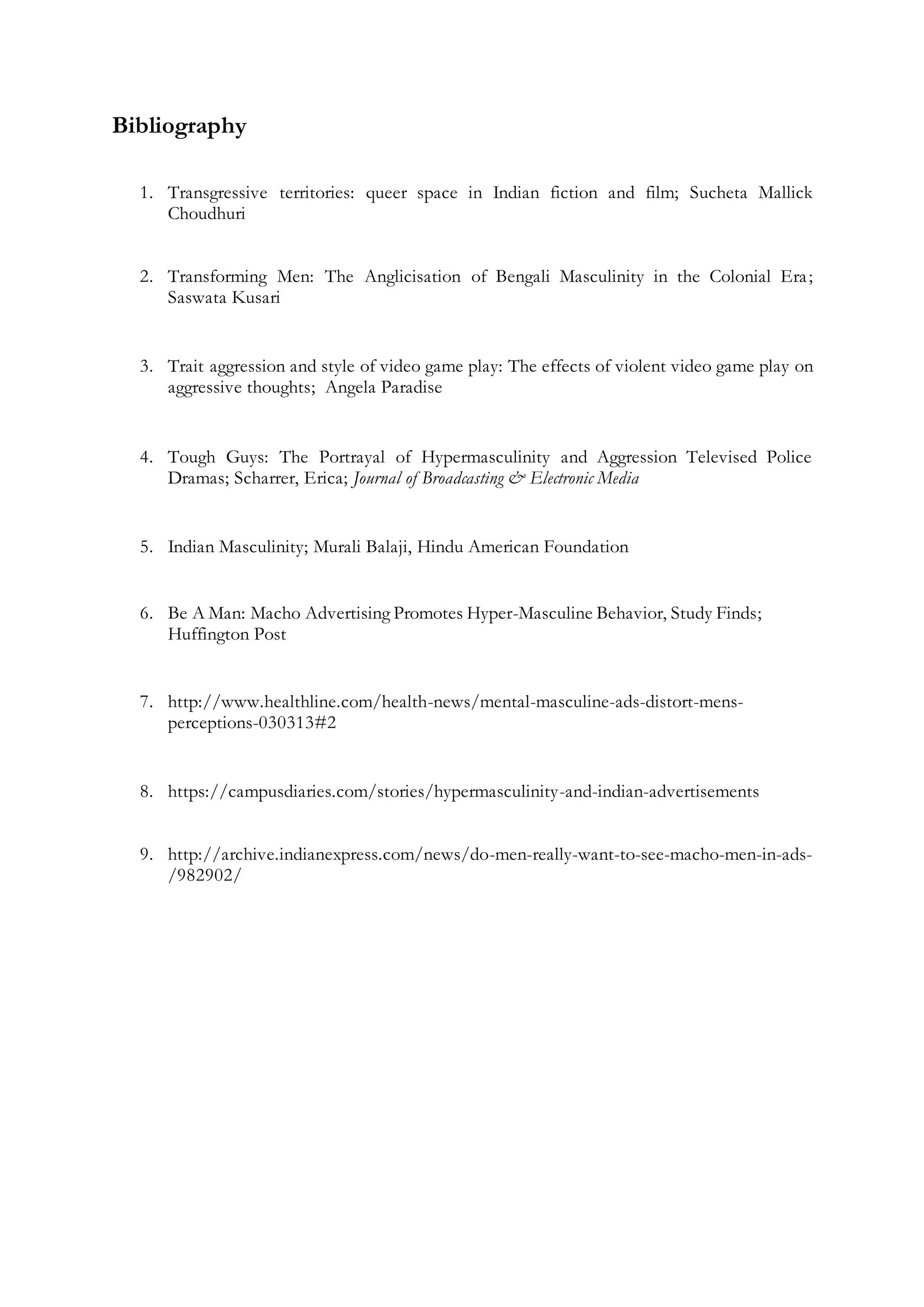This document discusses hypermasculinity in Indian cinema and advertisements. It defines hypermasculinity as the exaggeration of male stereotypical behaviors like aggression and sexuality. Researchers have found hypermasculinity portrayed in many Indian advertisements and films through muscular male models and heroes who emphasize strength and toughness. This reinforces unrealistic standards of masculinity that can influence societal attitudes and behaviors, encouraging traits like callousness, danger-seeking and the belief that violence is manly.
